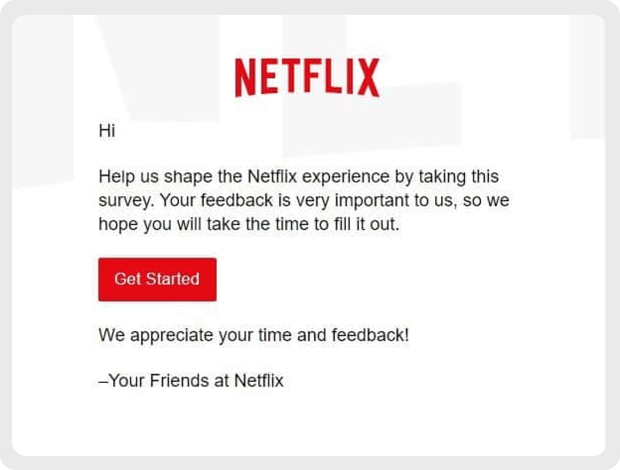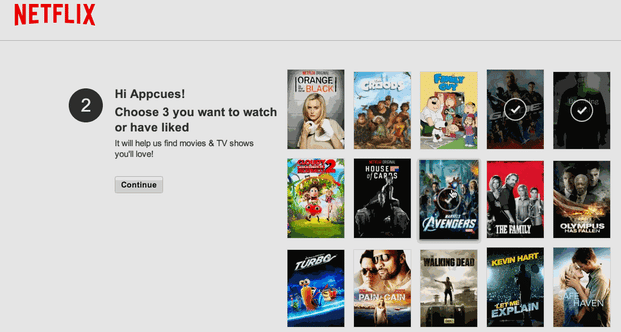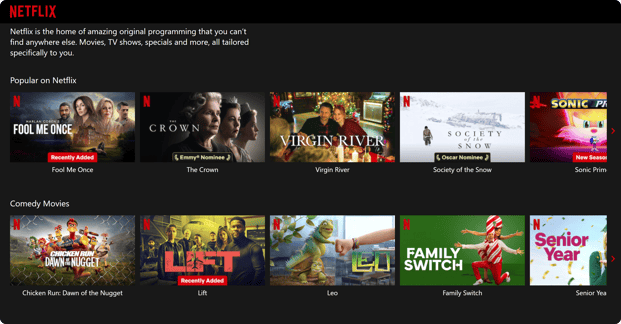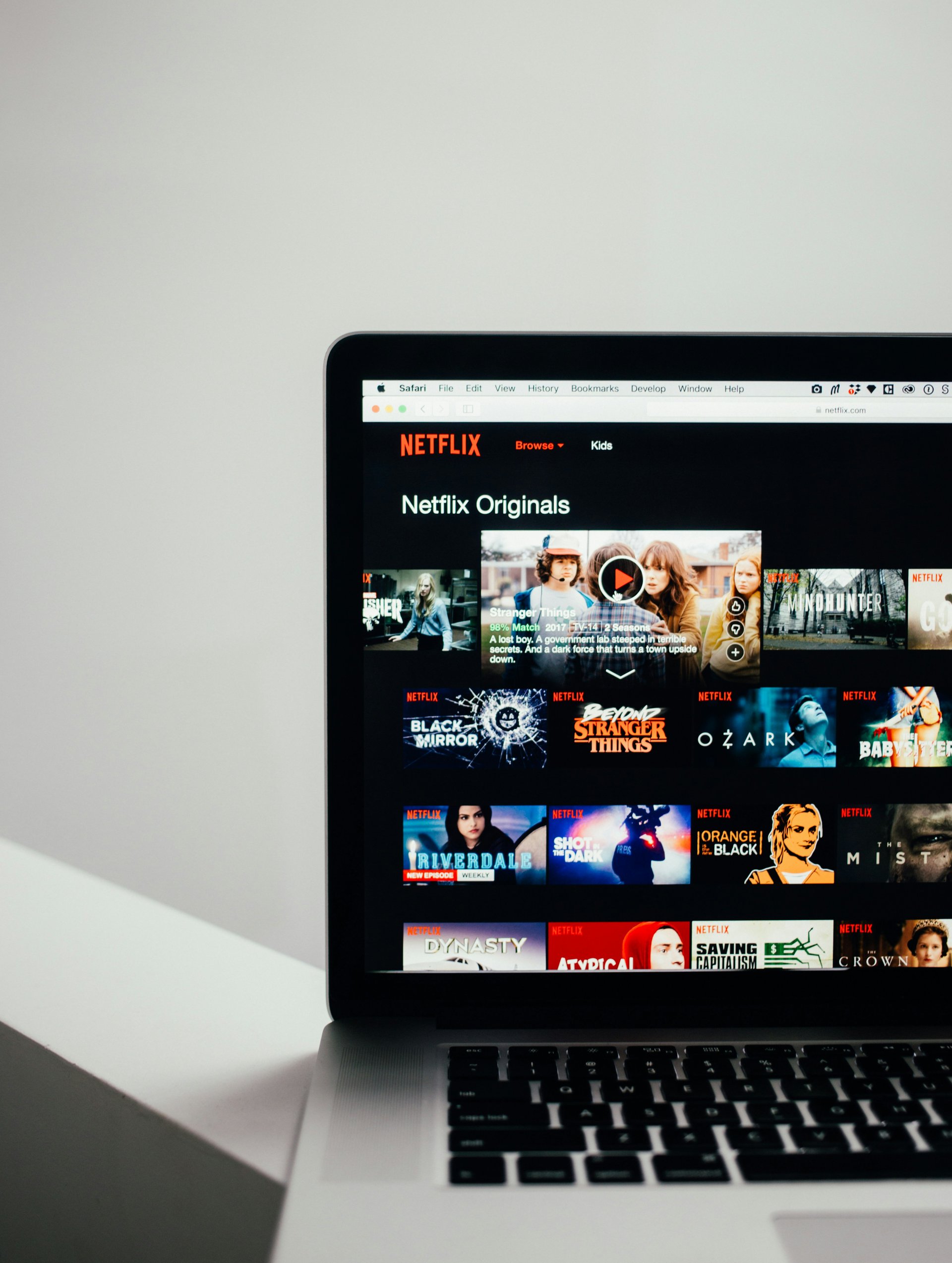Welcome to the fifth chapter of our new series, From A to I: 9 AI Use Cases to become the Netflix of casinos. Feel free to see the other chapters here.
In this use case, we’ll be diving into how Netflix utilise cold-start recommendations, providing casino operators with all the information they need to offer personalisation on an entirely new level, matching up to the likes of Netflix.
Haven’t read the rest of the series yet? Check it out here.
Here are three key learnings about cold start recommendations:
1. Having the right metrics
When a new subscriber joins Netflix the race to unlock real-time personalisation begins. It is about the speed in which Netflix can create a unique experience for them that is highly relevant.
Unlike traditional means of offering content recommendations, there’s no behavioural data to start to personalise from at this stage, nor are there any indications as to what preferences are (beyond their source). Hence the ‘cold start problem’.
In addition to the need for a personalised home page, the relevant metrics tracked are also tweaked for this lifecycle stage. The goals and KPIs need to reflect the need to ensure someone comes back the next day, rather than overall engagement.
As such, the first thing to set right is ensuring that you have the correct objectives, and therefore make good early recommendations to ensure that every new subscriber finds something relevant to them. Fortunately for Netflix, their conversion rate is 93%.

This isn’t just within the home feed of Netflix, but they take the same approach when it comes to their email marketing, where the goal is to learn as quickly as possible and provide you with the next best recommendation after every piece of content you enjoy.
What casinos can learn
With the rate at which casinos acquire new players, and the costs spent, generating an appropriate ROI (Return On Investment) is essential.
Casinos must take the necessary steps to have models that are dedicated just to early-life players, with the clear goal of getting them to return. By providing models with a desired end-state, they can optimise accordingly. By focusing on this, rather than ARPU (Average Revenue Per Unit) for example, you’ll find that other key metrics should also increase, such as deposits, number of games played, session length etc.
With Amplifier AI’s Game Recommendation feature we are able to cater for all player lifecycles, with every player going through their own journeys, the level of behavioural data increases, models used, and metrics measured are adapted.
2. Surveying opinions
Having confirmed clear metrics for a player’s early life, the goal is to create an onboarding experience that enables recommendations to be as applicable as possible.
Netflix begin ‘jumpstarting’ new subscribers, or new profiles within existing subscriptions by optionally asking them to share a few titles they enjoy.

This method enables them to utilise content metadata and similarity modelling to kick-start initial recommendations.
This method is also utilised by other companies, such as when joining X (formerly Twitter), as they allow users to choose from popular accounts to follow.
.png?width=621&height=421&name=blog%205%20image%201%20(1).png)
It’s worth noting that once Netflix starts receiving behavioural cues from subscribers, they will weigh that higher than initial survey results. Purely because what you say you’re interested in and what you actually are sometimes diverge considerably.
What casinos can learn
Many casinos choose not to add preferences during the player sign-up process because of the friction that it adds, which is understandable. But this must be balanced with the incredible level of churn experienced by a casino, the nature of a competitive market, and the role that user experience plays in ensuring player loyalty.
Anthem takes the approach that AI is heavily impacted by the quality of data inputted, whether that be content metadata, player preferences etc.
Similarly, Netflix note that their recommendations are influenced by many factors, including:
- Your interactions with our service (such as your viewing history and how you rated other titles)
- Other members with similar tastes and preferences for our service
- Information about the titles, such as their genre, categories, actors, release year, etc.
Source: Netflix
By focusing on quality inputs, you can provide more relevant recommendations. For example, Anthem’s ‘significant activity’ feature ensures that games which are played for brief moments aren’t taken as a signal of enjoyment. There is a level of filtering to ensure that you are not presenting people with, or basing recommendations on content in which they have demonstrated a lack of interest.
3. Merging into personalised recommendations
Should someone choose to skip an initial survey, Netflix will instead utilise popular recommendations. They also try and present a diverse range of options, being fully aware of the almost infinite behavioural styles, it’s key to be able to try and help subscribers find their unique interests as early as possible.
 Content personalisation by Netflix utilises a variety of data points of the subscriber
Content personalisation by Netflix utilises a variety of data points of the subscriber
Whether a survey has been completed, or popular recommendations have been provided, Netflix then builds a profile for every subscriber, one where more data helps to provide a more personalised offering.
It’s not just whether content is watched, but a variety of data points are used, including:
- The device used to stream.
- If the show was paused, rewound, or fast-forwarded.
- If the viewer resumed watching after pausing.
- Whether the viewer gave the show or movie a thumbs-up.
- The number of searches and what is searched for.
- Browsing and scrolling behaviour.
As all of this comes together with human curation, Netflix should quickly begin to feel like it was made for you. The recommendations combine content that you’ve already seen before, content which is similar, and the correct amount of slightly different content that enables you to explore new categories.
All of which is not just personalised for the first row, but every row, the ordering, and weighting. We’ll discuss this more in later chapters.
What casinos can learn
With new players, and limited knowledge of preferences, it would be tempting to just show content that is popular with the wider player base, games with the most players, or games with the highest revenue.
Unfortunately, while this may work well for a certain set of behavioural characteristics, invariably these games will include a higher level of volatility, which isn’t always great for new players. With such a short window of early lifecycle, low RTPs tend to correlate strongly with a lack of day 2 return.
.png?width=621&height=610&name=Frame%20797%20(1).png) Hence why 50% of players play for less than 2 days.
Hence why 50% of players play for less than 2 days.
As such, Anthem’s Game Recommendation models tend to display content that is proven to return new players, utilising the entire content library, rather than just those with the highest engagement. This also aids in using more diverse recommendations which are proven to increase spins per player by 4x.
As a player’s lifecycle progresses, game similarity recommends games which have underlying commonalities to those which prove favourable for a given player, and so the model continues to optimise.
Learn more about Amplifier AI
Have you been following this series closely? Perhaps you’re feeling ready to take the plunge with artificial intelligence? Get in touch with our AI specialists and book a demo today, you’ll soon discover just how you can offer Netflix-level personalisation.

.png?width=2000&height=540&name=Blog%201%20Banner%20(1).png)